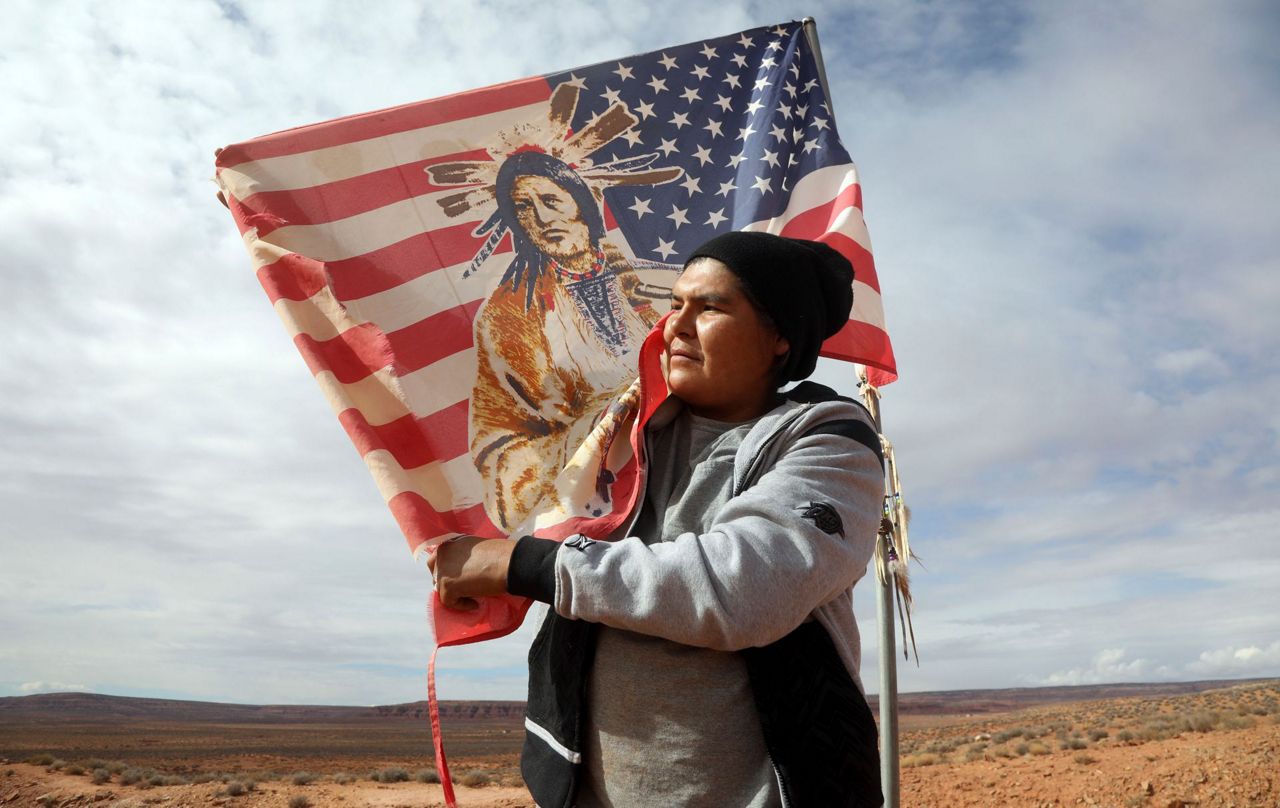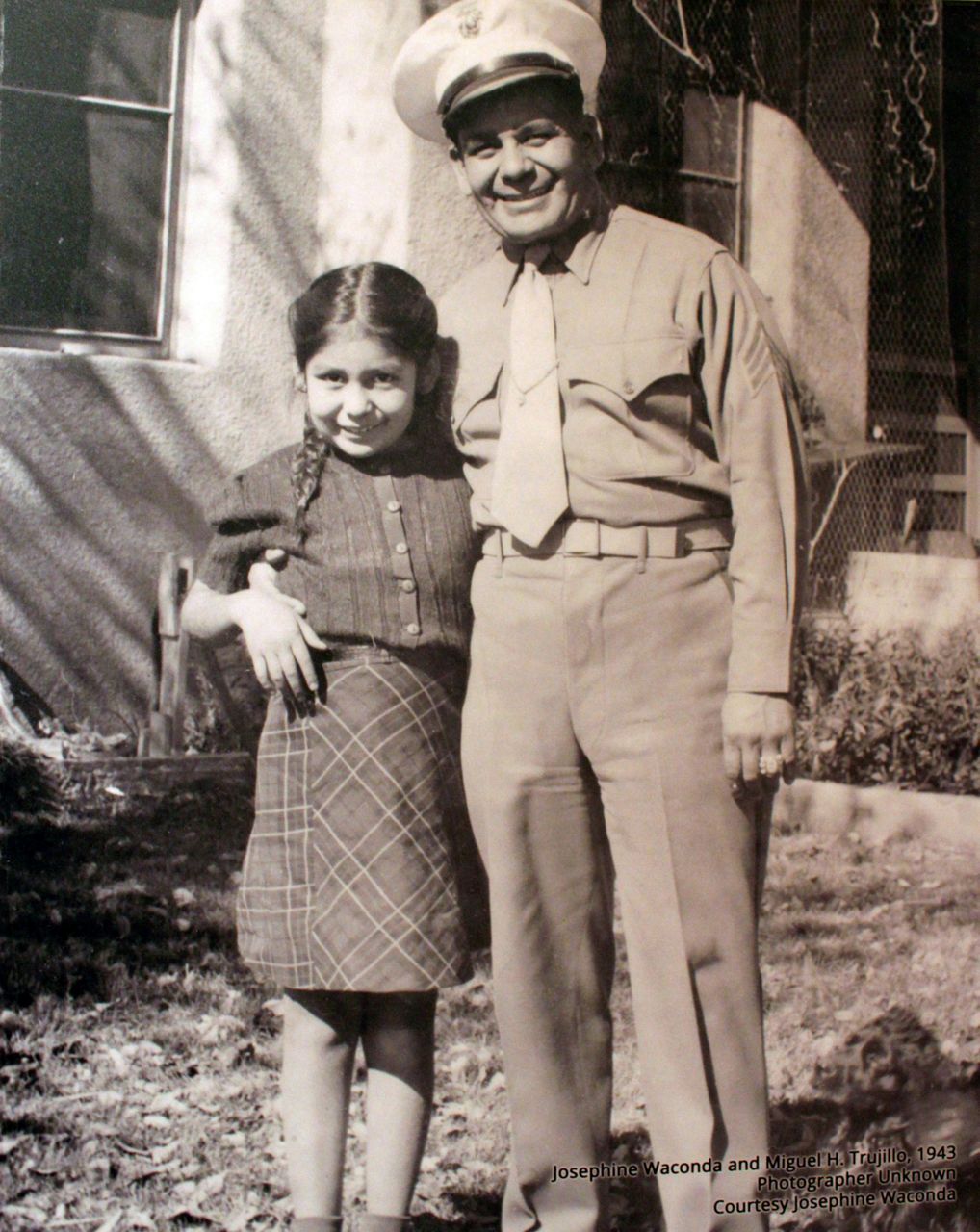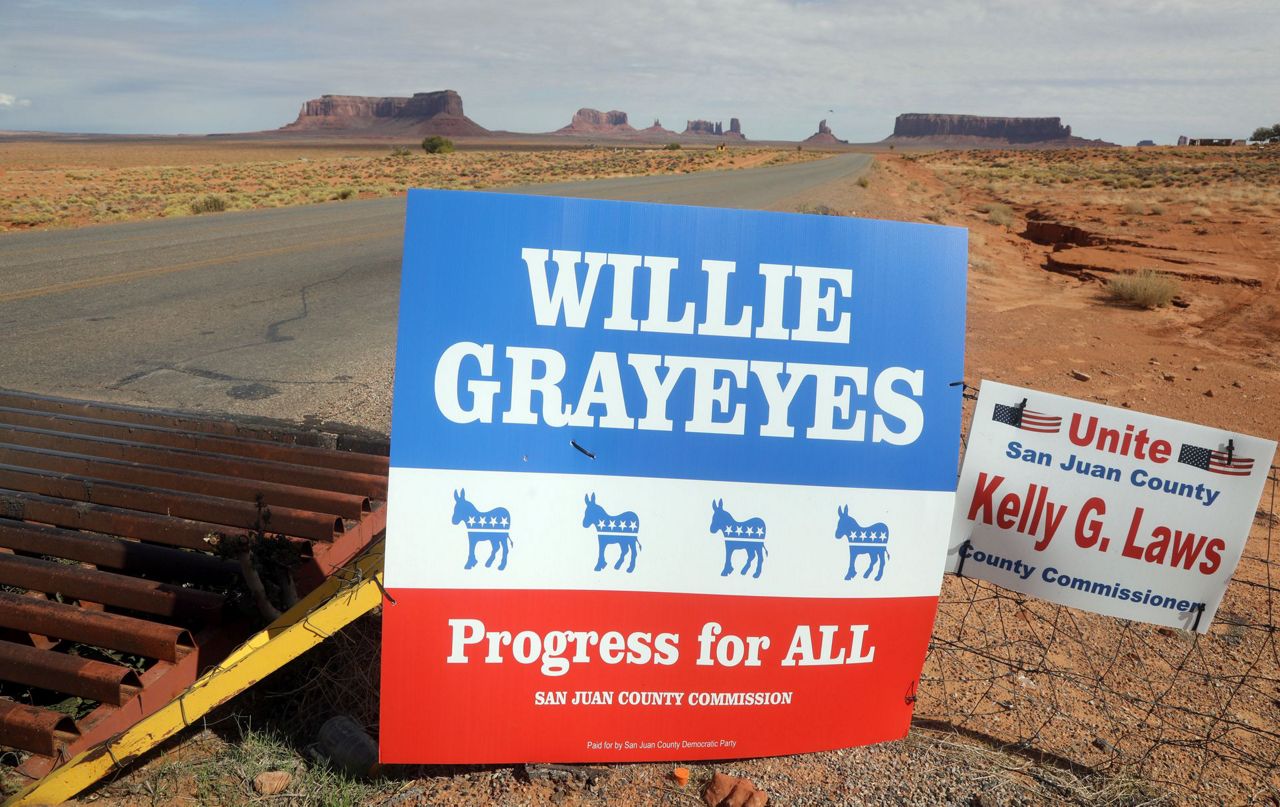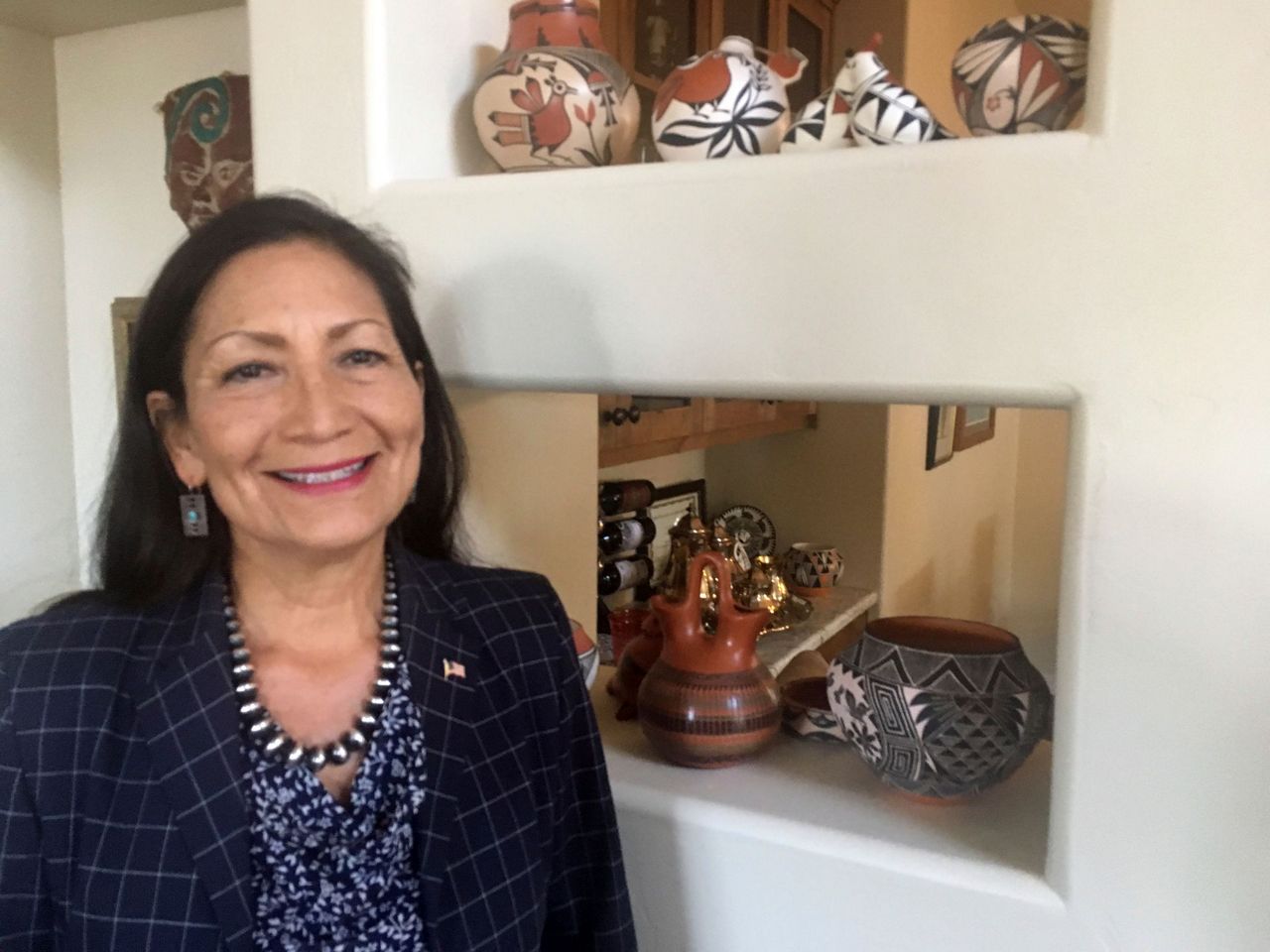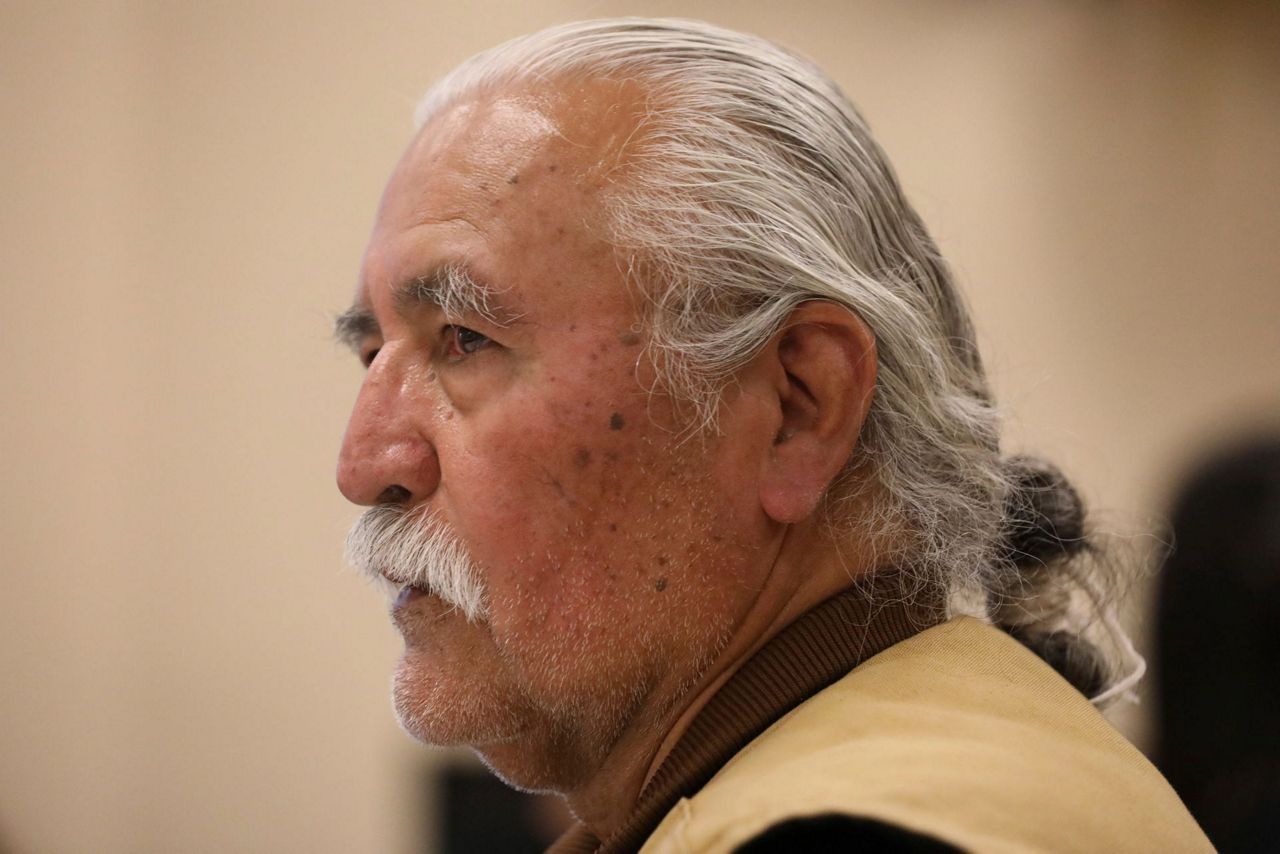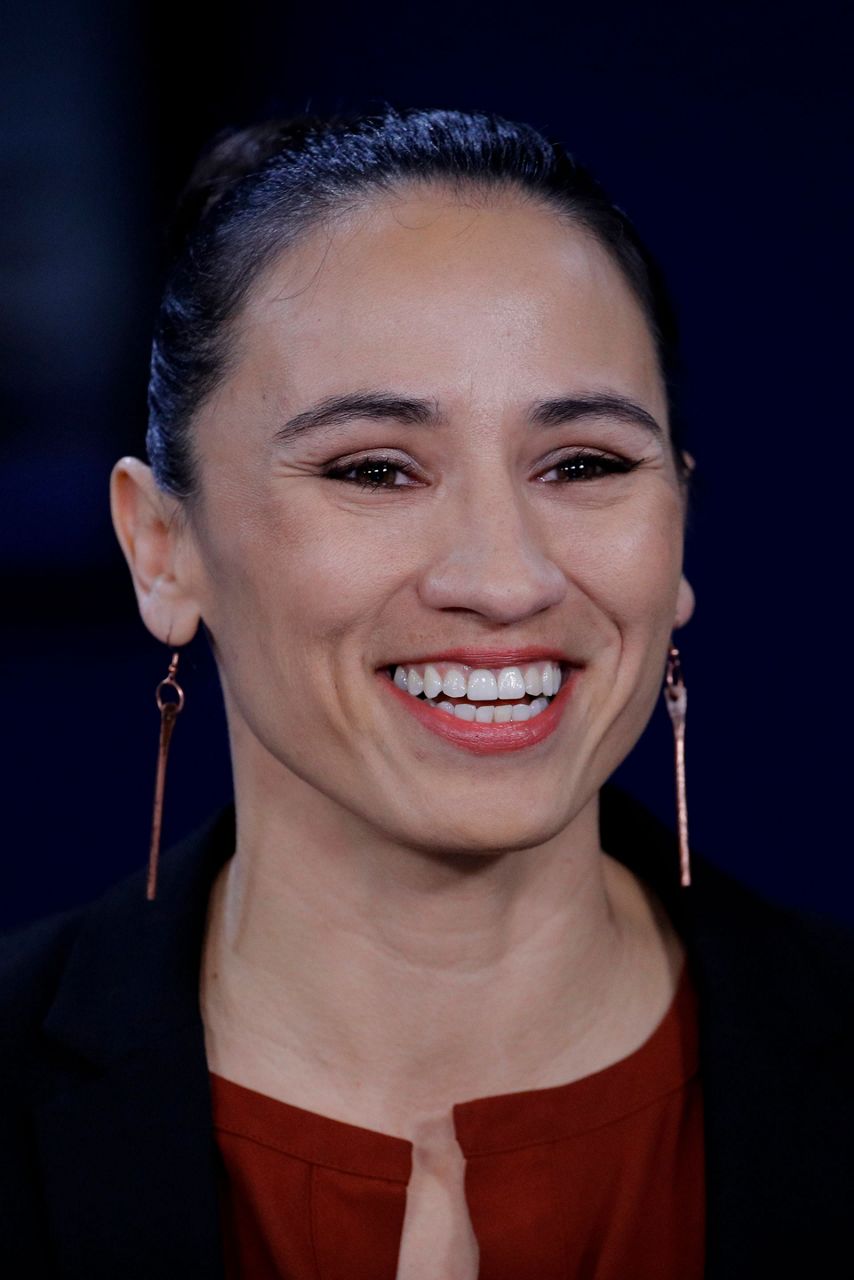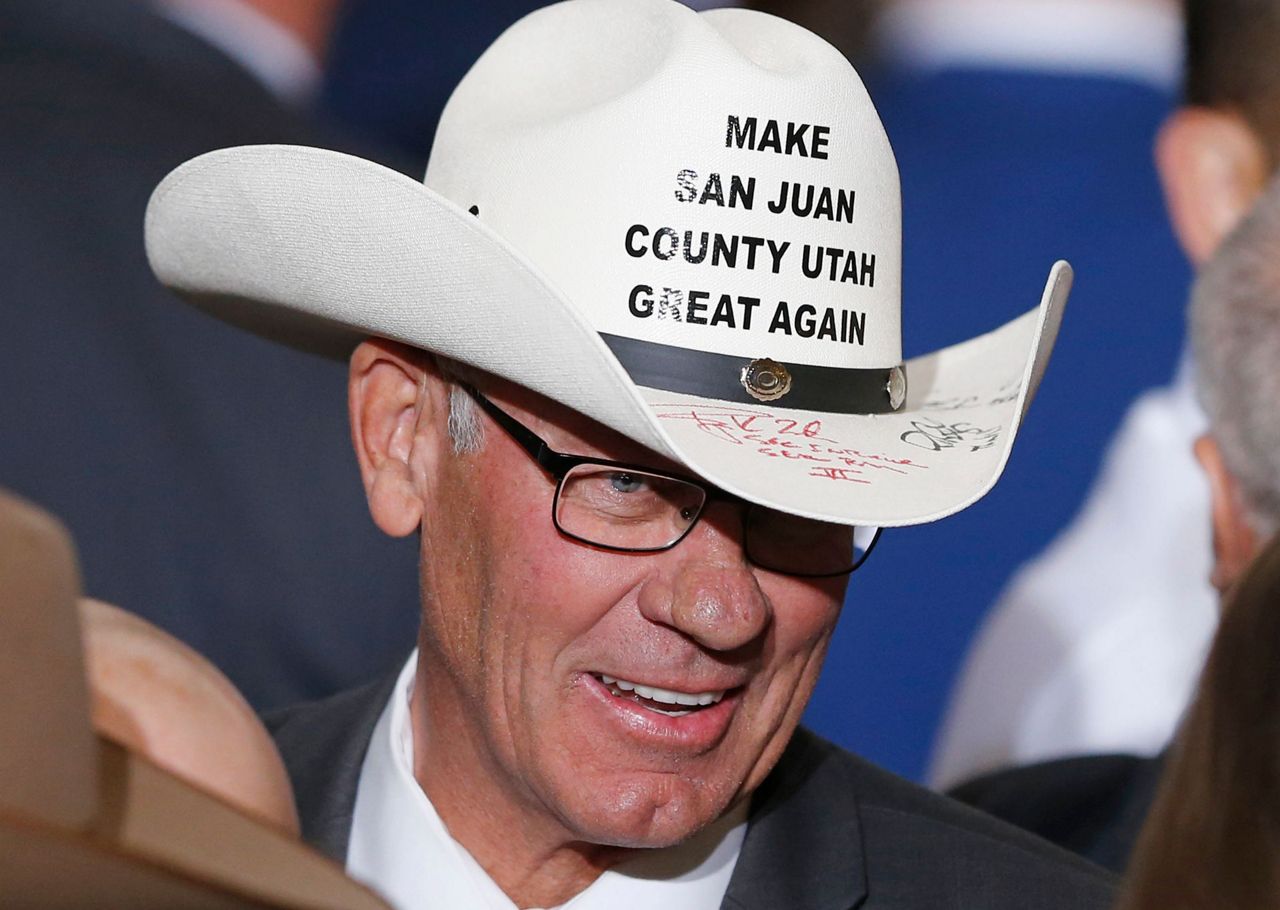ALBUQUERQUE, N.M. (AP) — Native Americans are running for high-profile seats this year in New Mexico, Kansas, Minnesota and Idaho in what could bring historic gains for a population once excluded from electoral politics.
Indian voters also could swing important races in Montana, Arizona and North Dakota.
The midterm election Tuesday comes 70 years after Isleta Pueblo member Miguel Trujillo's landmark court challenge against a New Mexico law that had prevented Native Americans from voting.
And 50 years ago, Native American voters were credited with helping Robert F. Kennedy win a historic victory in South Dakota's Democratic presidential primary.
Here's a look at how the Native American vote has become a key bloc in the U.S. after decades of exclusion:
___
THE LONG FIGHT
Written into the original U.S. Constitution was a clause that said Indians who didn't pay taxes could not be counted in the voting population of states. That prevented Native Americans living in tribal communities — considered sovereign nations — from becoming U.S. citizens and voting members of the new democracy.
Like African Americans, Native Americans were excluded from voting and public accommodations long after the Civil War and the Wounded Knee Massacre of 1890 in South Dakota.
The Indian Naturalization Act of 1890 finally granted citizenship to Native Americans by an application process, but many weren't allowed to vote until President Calvin Coolidge signed the Indian Citizenship Act in 1924.
Still, a number of states such as New Mexico and Arizona barred many Native Americans from voting.
That changed after World War II veteran Marine Sgt. Miguel Trujillo Sr. sued New Mexico when a county clerk refused to allow him to register to vote because he lived on tribal land.
Trujillo won his case, clearing the way for Native Americans in New Mexico and elsewhere to vote.
___
REMAINING BARRIERS
In 1975 under President Gerald Ford, the Voting Rights Act was amended with changes that mentioned Alaska, Arizona and parts of South Dakota as places that discriminated against Native Americans through ballot language. The federal law required that polling locations offer information in Spanish and various Native languages.
As late as the 1990s, some New Mexico counties were subject to U.S. Justice Department consent decrees for violating the Voting Rights Act by not providing information in Native languages.
Meanwhile, voters began electing Native Americans to seats in state Legislatures. In 1992, Democrat Ben Nighthorse Campbell of Colorado became the first Native American elected to the U.S. Senate. He later switched to the Republican Party.
___
THE 2018 ELECTION
A new Republican-backed ID law in North Dakota upheld by the U.S. Supreme Court prevents Native Americans without a residential address from voting.
Opponents say the law is intended to disenfranchise Native American voters who historically have used post office boxes as addresses.
Supporters of the law say it's meant to combat voter fraud.
Sen. Heidi Heitkamp, a Democrat, won a close race in 2012 in the state with the help of Native American voters. She is now facing a strong challenge from Republican Rep. Kevin Cramer.
Elsewhere, Democrats Debra Haaland in New Mexico and Sharice Davids in Kansas are vying to become the first Native American women elected to the U.S. House.
In Idaho, Paulette Jordan , a Democrat, is vying to become the nation's first elected Native American governor.
Voters in Minnesota will elect the state's first Native American lieutenant governor. Both candidates — Democrat state Rep. Peggy Flanagan and Republican Donna Bergstrom — are members of tribal nations that are bands of Ojibwe.
___
Associated Press Writer Russell Contreras is a member of the AP's race and ethnicity team. Follow Contreras on Twitter at http://twitter.com/russcontreras . AP's complete coverage of the U.S. midterm elections: http://apne.ws/APPolitics .
Copyright 2018 The Associated Press. All rights reserved. This material may not be published, broadcast, rewritten or redistributed.



